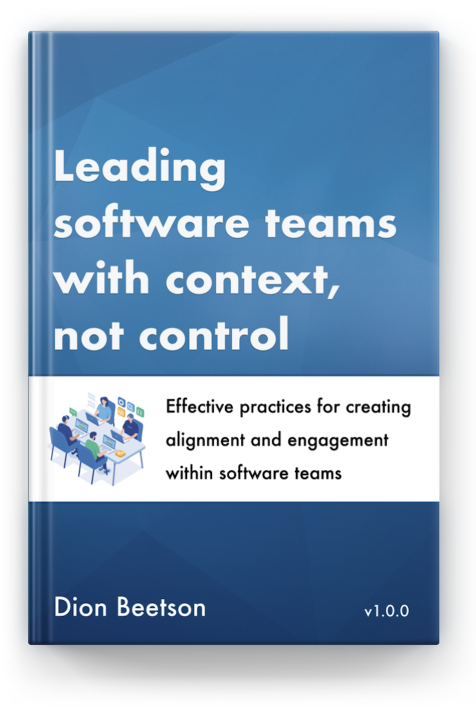About the book
As a software engineering leader, the scope of your role is extensive. You have many competing responsibilities and priorities that need to be balanced to ensure you and your team are as effective as possible. These can include providing architectural direction, driving peer to peer collaboration, ensuring cross-team alignment, motivating teams with purpose, supporting team members' career progression, or perhaps helping remove blockers and impediments. All of these efforts work to create a specific culture within a software team that aims to improve effectiveness, engagement, and retention.
This book is for software engineering leaders who are responsible for leading teams. It also dives into the unique complexity and challenges that comes with leading, aligning and supporting multiple software teams. This book aspires to provide you with helpful and reusable approaches that can be leveraged to bring about a greater level of efficiency into your role as a leader. There are many books written around leading teams or leading people, this book takes a lens of what specific practices and initiatives you should be investing your time into when leading software engineering teams.
What you will learn:
- How to baseline a software team
- How to develop a software engineering roadmap
- Defining effective software engineering metrics
- Prioritizing technical uplift work
- Running effective 1:on:1s
- Implementing a software team structure that works
- Defining a career pathway framework for software teams
- Running engaging team meetings
- Building a culture of learning
- Crafting an experimentation culture
- How to run software engineering working groups
- Also check out the ToC below for additional learning topics...
The book has been inspired by the many people I have worked with, learnings from practices I have implemented, as well as books and blogs I have read over the years. I see this is a book that leads itself to many iterations and should evolve as I discover new practices and techniques that help me improve the way I lead software teams. Regardless of the size of your software team, if you find yourself needing to better balance both the technical and people aspects of leading teams, or guidance on initiatives you could be running to improve team alignment, effectiveness and engagement then this book is written for you. Read the free sample
Buy on Leanpub Buy on Amazon Buy on Apple Buy on Google



© Copyright - All Rights Reserved.
version 2.0.5